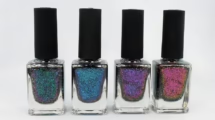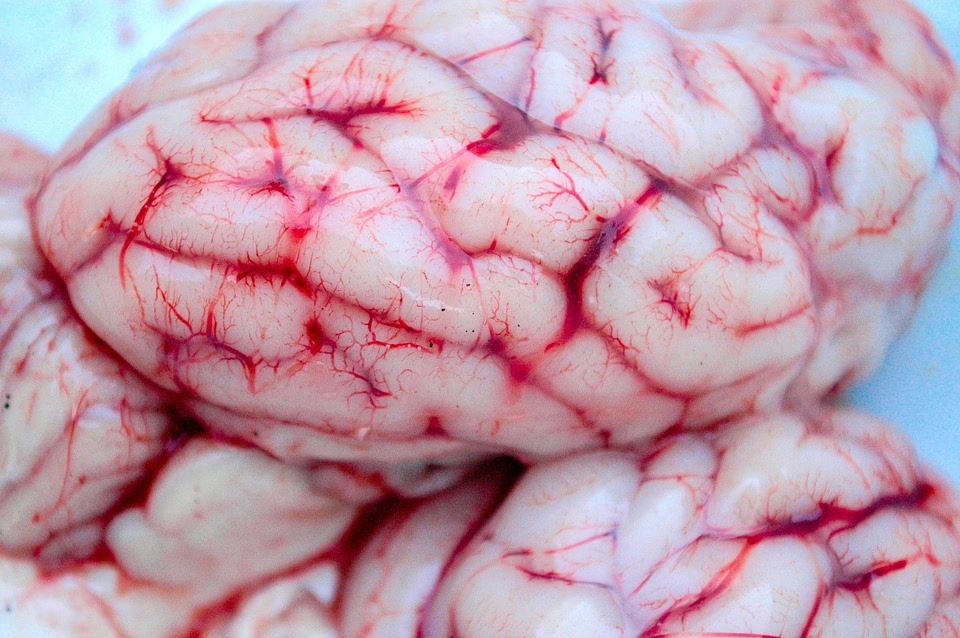Beyond Looks: What Truly Determines Sexual Attraction?
Introduction: The Enduring Mystery of Attraction
From ancient poetry to modern-day dating apps, humanity has been captivated by the elusive force we call sexual attraction. We’re drawn to some individuals and indifferent to others, sometimes even repelled despite recognizing objective beauty. While societal emphasis frequently focuses on physical appearance as the primary driver of attraction, a deeper exploration reveals a complex and multifaceted landscape. This article delves beyond the superficial, examining the myriad psychological, biological, and social factors that contribute to sexual attraction, ultimately challenging the notion that looks are the sole determinant of romantic desire. We will investigate the roles of personality traits, shared values, pheromones, social context, attachment styles, and even unconscious biases in shaping our preferences and driving the powerful force of attraction. [1] Understanding these diverse influences can not only provide valuable insight into our own preferences but also promote more meaningful and fulfilling relationships.
I. The Perceived Power of Physical Appearance: A Shifting Landscape
Undeniably, physical appearance plays a role in initial attraction. Our brains are wired to make quick assessments based on visual cues, and these assessments can influence our initial interest in another person. Evolutionary psychology suggests that certain physical features were historically associated with health, fertility, and genetic fitness, making them more attractive from a survival perspective. [2] For example, symmetrical faces, clear skin, and healthy hair are often perceived as indicators of good health and genetic quality. However, the specific physical attributes considered attractive are subjective and vary across cultures, historical periods, and even individual preferences.
A. Cultural Influences on Beauty Standards:
Beauty standards are not universal; they are largely shaped by cultural norms, media representations, and social trends. What is considered attractive in one culture may be perceived as unattractive or even undesirable in another. For example, the emphasis on thinness in Western cultures is a relatively recent phenomenon, and in some cultures, larger body sizes are considered more desirable. [3] Similarly, specific facial features, hairstyles, and clothing styles are often associated with beauty and attractiveness within a particular cultural context. The media plays a significant role in perpetuating and reinforcing these beauty standards, often presenting idealized images that are unattainable for the majority of the population. This can lead to feelings of inadequacy and dissatisfaction with one’s own appearance, as well as unrealistic expectations of potential partners.
B. The Role of Familiarity and Exposure:
Our perception of attractiveness can also be influenced by familiarity and repeated exposure. The mere-exposure effect suggests that we tend to develop a preference for things we are familiar with, even if we initially had no strong feelings about them. [4] This can explain why individuals who we initially found unattractive may become more appealing over time, as we become more accustomed to their appearance. Furthermore, our brains are constantly learning and adapting, and our perception of beauty can be shaped by our experiences and the people we interact with. For instance, individuals who are frequently exposed to certain types of facial features or body types may develop a preference for those features over time.
C. The Subjectivity of Beauty: “Beauty is in the Eye of the Beholder”:
The adage “beauty is in the eye of the beholder” highlights the inherent subjectivity of attractiveness. While there may be some universally appealing features, individual preferences play a significant role in determining who we find attractive. Our personal experiences, values, and cultural background all contribute to our unique perception of beauty. What one person finds alluring, another may find unremarkable or even unattractive. This subjectivity underscores the limitations of relying solely on physical appearance as a measure of attraction and emphasizes the importance of considering other factors.
II. The Power of Personality: More Than Just a Pretty Face
While physical appearance may pique initial interest, it is personality that often sustains and deepens attraction. Personality traits can significantly impact how we perceive and interact with others, ultimately shaping our feelings of attraction and compatibility. Certain personality traits are consistently associated with increased attractiveness, regardless of physical appearance.
A. Confidence and Self-Assurance:
Confidence is a highly attractive quality. Individuals who exude self-assurance and belief in themselves are often perceived as more competent, capable, and desirable. Confidence suggests a sense of internal security and stability, which can be reassuring and appealing to potential partners. However, it’s crucial to distinguish between genuine confidence and arrogance. Arrogance is often perceived as off-putting and can be a sign of insecurity, while genuine confidence stems from a deep-seated sense of self-worth and acceptance.
B. Humor and a Sense of Playfulness:
Humor is another universally attractive personality trait. The ability to make others laugh and create a lighthearted atmosphere can be incredibly appealing. Humor suggests intelligence, creativity, and the ability to cope with stress. It also fosters a sense of connection and intimacy, as shared laughter can create a bond between people. A sense of playfulness can also be highly attractive, as it suggests a willingness to embrace spontaneity and adventure.
C. Kindness and Empathy:
Kindness and empathy are essential for building strong and lasting relationships. Individuals who demonstrate compassion, understanding, and a genuine concern for others are often perceived as more trustworthy and desirable. Empathy allows us to connect with others on a deeper level, fostering a sense of intimacy and vulnerability. Kindness can also be expressed through small acts of generosity and consideration, which can significantly impact how others perceive us.
D. Intelligence and Curiosity:
Intelligence and intellectual curiosity can be incredibly attractive, particularly for individuals who value intellectual stimulation and engaging conversation. Intelligence suggests a capacity for learning, problem-solving, and critical thinking. Intellectual curiosity demonstrates a desire to explore new ideas and perspectives, which can be incredibly stimulating and engaging.
E. Authenticity and Vulnerability:
Authenticity and vulnerability are essential for building genuine and meaningful connections. Individuals who are willing to be themselves, flaws and all, are often perceived as more trustworthy and relatable. Vulnerability involves sharing our thoughts, feelings, and experiences with others, which can create a sense of intimacy and connection. However, it’s important to note that vulnerability requires trust and a sense of safety. Sharing too much too soon can be overwhelming or even off-putting.
III. The Silent Language of Pheromones: Chemical Signals of Attraction
Beyond conscious perception, the human body produces and detects chemical signals called pheromones, which can play a subtle but significant role in attraction. [5] While the scientific evidence supporting the existence and function of human pheromones is still debated, research suggests that these chemicals may influence our subconscious preferences and mate selection.
A. The Major Histocompatibility Complex (MHC): Scent of Compatibility:
The Major Histocompatibility Complex (MHC) is a group of genes that play a crucial role in the immune system. Research suggests that we may be unconsciously attracted to individuals with MHC genes that are different from our own. [6] This is believed to be an evolutionary adaptation that promotes genetic diversity and strengthens the immune system of offspring. Studies have shown that individuals can differentiate between the scents of people with different MHC genes, and that they tend to find the scents of those with dissimilar MHC genes more attractive.
B. Other Potential Human Pheromones:
Other chemicals, such as androstadienone (found in male sweat) and estratetraenol (found in female urine), have been proposed as potential human pheromones. [7] Some studies have suggested that these chemicals can influence mood, sexual arousal, and perceptions of attractiveness. However, the research in this area is still preliminary, and more studies are needed to confirm the existence and function of these chemicals.
C. The Subconscious Influence of Scent:
Regardless of the specific chemicals involved, scent plays a powerful role in attraction. Smell is closely linked to the emotional centers of the brain, and certain scents can evoke strong memories and emotions. We may be unconsciously drawn to individuals who emit scents that we find pleasing or comforting, even if we are not consciously aware of the connection.
IV. Shared Values and Beliefs: Finding Common Ground
Compatibility is often rooted in shared values and beliefs. When we share similar values with another person, we are more likely to feel understood, validated, and connected. Shared values provide a foundation for building a strong and lasting relationship.
A. Core Values and Life Goals:
Core values are the fundamental principles that guide our lives. They include things like honesty, integrity, compassion, family, career, and spirituality. When we share similar core values with another person, we are more likely to be aligned on important life decisions and goals. This can lead to greater harmony and satisfaction in the relationship.
B. Political and Social Views:
Political and social views can also play a significant role in attraction and compatibility. Sharing similar political and social beliefs can create a sense of solidarity and shared purpose. Conversely, significant differences in political and social views can lead to conflict and tension in the relationship.
C. Lifestyle and Interests:
Shared lifestyle and interests can provide opportunities for shared activities and experiences, which can strengthen the bond between partners. Whether it’s a love of travel, a passion for the arts, or a commitment to fitness, shared interests can create a sense of connection and mutual enjoyment.
V. The Influence of Social Context: Attraction in the Eye of the Situation
Our perception of attractiveness can be influenced by the social context in which we encounter another person. The environment, the situation, and the presence of others can all affect our feelings of attraction.
A. The “Bridge Effect”: Misattribution of Arousal:
The “bridge effect” is a psychological phenomenon that demonstrates how arousal can be misattributed. In a classic experiment, researchers found that men who crossed a suspension bridge (which elicited feelings of fear and anxiety) were more likely to be attracted to a female researcher who they met on the other side of the bridge, compared to men who met the researcher on a stable bridge. [8] This suggests that arousal, regardless of its source, can be misattributed as attraction.
B. The Cheerleader Effect: Group Dynamics and Perceived Attractiveness:
The “cheerleader effect” describes the tendency for individuals to appear more attractive when they are in a group. This is believed to be due to the way our brains process visual information. When we see a group of people, our brains tend to average out their features, which can make individuals appear more attractive than they would on their own. [9]
C. Social Proof and Third-Party Validation:
Social proof refers to the tendency to look to others for cues on how to behave or what to believe. If we see that other people are attracted to someone, we may be more likely to find that person attractive ourselves. This can be particularly true if we admire or respect the opinions of those other people. Third-party validation, such as positive feedback from friends or family, can also increase our attraction to another person.
VI. Attachment Styles: Shaping Our Romantic Preferences
Attachment theory, developed by John Bowlby and Mary Mainsworth, suggests that our early childhood experiences with caregivers shape our attachment styles, which in turn influence our romantic relationships. [10] Our attachment style can affect who we are attracted to, how we behave in relationships, and how we respond to conflict and intimacy.
A. Secure Attachment:
Individuals with a secure attachment style typically had caregivers who were consistently responsive and attentive to their needs. They are comfortable with intimacy, trust their partners, and are able to maintain healthy boundaries in relationships. They tend to be attracted to partners who are also securely attached.
B. Anxious-Preoccupied Attachment:
Individuals with an anxious-preoccupied attachment style typically had caregivers who were inconsistent in their responsiveness. They crave intimacy but fear rejection, often becoming clingy and demanding in relationships. They may be attracted to partners who are emotionally unavailable or distant.
C. Dismissive-Avoidant Attachment:
Individuals with a dismissive-avoidant attachment style typically had caregivers who were emotionally unavailable or rejecting. They tend to avoid intimacy and emotional vulnerability, often prioritizing independence and self-sufficiency. They may be attracted to partners who are also avoidant or emotionally unavailable.
D. Fearful-Avoidant Attachment:
Individuals with a fearful-avoidant attachment style typically had caregivers who were abusive or neglectful. They desire intimacy but fear getting hurt, often experiencing a mix of anxious and avoidant behaviors in relationships. They may be attracted to partners who are unpredictable or volatile.
VII. Unconscious Biases: Hidden Influences on Attraction
Our unconscious biases, also known as implicit biases, are attitudes or stereotypes that affect our understanding, actions, and decisions in an unconscious manner. These biases can influence our perceptions of attractiveness and shape our preferences in subtle but significant ways.
A. Race and Ethnicity:
Unconscious racial and ethnic biases can influence our attraction to individuals from different racial or ethnic groups. These biases may stem from cultural norms, media representations, or personal experiences. While many people consciously reject racism, unconscious biases can still affect their romantic preferences.
B. Age:
Age biases can also influence attraction. Society often promotes the idea that youth is more attractive, which can lead to ageism in dating. Unconscious biases about age can affect our perceptions of individuals who are significantly older or younger than us.
C. Socioeconomic Status:
Socioeconomic status can also influence attraction, often unconsciously. Individuals may be drawn to partners who are from similar socioeconomic backgrounds, due to shared experiences, values, and lifestyles. Unconscious biases about socioeconomic status can affect our perceptions of individuals who are significantly wealthier or poorer than us.
D. Weight and Body Size:
Weight and body size biases are pervasive in society. Individuals may be unconsciously drawn to partners who conform to societal ideals of beauty, which often prioritize thinness. Unconscious biases about weight and body size can affect our perceptions of individuals who are overweight or obese.
VIII. The Role of Proximity and Opportunity: Being in the Right Place at the Right Time
Proximity and opportunity play a crucial role in attraction. We are more likely to be attracted to people who we encounter frequently and who are readily available to us. [11]
A. The Propinquity Effect: Familiarity Breeds Liking:
The propinquity effect suggests that we are more likely to form relationships with people who are physically close to us. [12] This is because proximity increases the frequency of interaction, which can lead to increased familiarity and liking.
B. Opportunity for Interaction and Connection:
Opportunity for interaction and connection is essential for developing attraction. We need to have the chance to get to know someone, to share experiences, and to build a relationship. Individuals who are readily available and open to interaction are more likely to be perceived as attractive.
C. The Impact of Social Networks:
Our social networks can also influence who we are attracted to. We are more likely to be attracted to people who are approved of by our friends and family. This is because social support can strengthen our relationships and increase our confidence in our choices.
IX. Beyond Attraction: Building Lasting Relationships
While attraction is an important initial spark, it is not the sole determinant of a successful and fulfilling relationship. Building lasting relationships requires commitment, communication, compromise, and a willingness to work through challenges.
A. Commitment and Trust:
Commitment and trust are essential for building a strong foundation in a relationship. Commitment involves a conscious decision to prioritize the relationship and to work towards a shared future. Trust involves believing in the honesty, integrity, and reliability of our partner.
B. Communication and Conflict Resolution:
Effective communication is crucial for navigating the complexities of a relationship. It involves expressing our thoughts and feelings honestly and respectfully, as well as actively listening to our partner. Conflict is inevitable in any relationship, but learning how to resolve conflict constructively is essential for maintaining a healthy and harmonious partnership.
C. Shared Goals and Mutual Support:
Sharing common goals and providing mutual support can strengthen the bond between partners. Working towards shared goals can create a sense of purpose and accomplishment. Providing emotional, practical, and financial support can help our partners to overcome challenges and achieve their aspirations.
D. Maintaining Intimacy and Passion:
Maintaining intimacy and passion is essential for keeping the spark alive in a long-term relationship. This involves prioritizing physical intimacy, emotional connection, and shared experiences. It also involves being open to exploring new things and keeping the relationship exciting and engaging.
Conclusion: Embracing the Complexity of Attraction
Sexual attraction is a complex and multifaceted phenomenon that extends far beyond physical appearance. While looks may play a role in initial attraction, the factors that truly determine who we are drawn to are far more nuanced and varied. Personality traits, shared values, pheromones, social context, attachment styles, and unconscious biases all contribute to the intricate dance of attraction. By understanding these diverse influences, we can gain valuable insight into our own preferences and develop more meaningful and fulfilling relationships. Ultimately, embracing the complexity of attraction allows us to move beyond superficial judgments and appreciate the unique qualities that make each individual truly captivating. Focusing on cultivating qualities that are genuinely attractive, such as kindness, confidence, and intelligence, can ultimately lead to more profound and lasting connections. [13]
References:
[1] Finkel, E. J., Eastwick, P. W., Karney, B. R., Reis, H. T., & Sprecher, S. (2012). Online dating: A critical analysis from the perspective of psychological science. Psychological Science in the Public Interest, 13(1), 3-66. [2] Buss, D. M. (1989). Sex differences in human mate preferences: Evolutionary hypotheses tested in 37 cultures. Behavioral and Brain Sciences, 12(1), 1-14. [3] Anderson-Fye, E. P. (1999). The globalization of eating disorders. International Journal of Eating Disorders, 26(4), 373-379. [4] Zajonc, R. B. (1968). Attitudinal effects of mere exposure. Journal of Personality and Social Psychology, 9(2, Pt.2), 1-27. [5] Stern, K., & McClintock, M. K. (1998). Human pheromones: In search of the vomeronasal organ. Hormones and Behavior, 34(1), 1-17. [6] Wedekind, C., Seebeck, T., Bettens, F., & Paepke, A. J. (1995). MHC-dependent mate preferences in humans. Proceedings of the Royal Society of London. Series B: Biological Sciences, 260(1359), 245-249. [7] Jacob, S., Hayreh, D., & McClintock, M. K. (2001). Context-dependent effects of steroid chemosignals on human behavior. Hormones and Behavior, 40(2), 271-275. [8] Dutton, D. G., & Aron, A. P. (1974). Some evidence for heightened sexual attraction under conditions of high anxiety. Journal of Personality and Social Psychology, 30(4), 510-517. [9] Walker, M., & Vul, E. (2011). Hierarchical encoding makes individuals in a group seem more attractive. Psychological Science, 22(10), 1260-1267. [10] Bowlby, J. (1969). Attachment and loss, Vol. 1: Attachment. Attachment and Loss. New York: Basic Books. [11] Festinger, L., Schachter, S., & Back, K. (1950). Social pressures in informal groups: A study of human factors in housing. Stanford University Press. [12] Ibid. [13] Sprecher, S., & Regan, P. C. (2016). What makes you desirable? Perceived mate value as a predictor of romantic attraction. Journal of Social and Personal Relationships, 33(6), 773-792.

























Add Comment